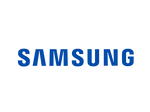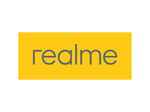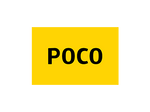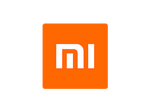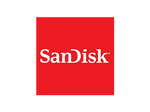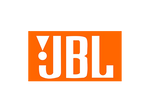- 8MP 5MP Front Camera
- 2 GB RAM 32 GB ROM Expandable Upto 256 GB
- 5000 mAh Battery
- A smartphone is a portable computer device that combines mobile telephone and computing functions into one unit
- smartphones allow people to access the internet play games and send text messages in addition to making phone calls and sending emails
Overview
A smartphone is a portable computer device that combines mobile telephone and computing functions into one unit. They are distinguished from feature phones by their stronger hardware capabilities and extensive mobile operating systems, which facilitate wider software, internet (including web browsing over mobile broadband), and multimedia functionality (including music, video, cameras, and gaming), alongside core phone functions such as voice calls and text messaging. Smartphones typically contain a number of metal–oxide–semiconductor integrated circuit chips, include various sensors that can be leveraged by pre-included and third-party software (such as a magnetometer, proximity sensors, barometer, gyroscope, accelerometer and more), and support wireless communications protocols.Early smartphones were marketed primarily towards the enterprise market, attempting to bridge the functionality of standalone personal digital assistant devices with support for cellular telephony, but were limited by their bulky form, short battery life, slow analog cellular networks, and the immaturity of wireless data services. These issues were eventually resolved with the exponential scaling and miniaturization of MOS transistors down to sub-micron levels, the improved lithium-ion battery, faster digital mobile data networks (Edholm's law), and more mature software platforms that allowed mobile device ecosystems to develop independently of data providers.In the 2000s, NTT DoCoMo's i-mode platform, BlackBerry, Nokia's Symbian platform, and Windows Mobile began to gain market traction, with models often featuring QWERTY keyboards or resistive touchscreen input, and emphasizing access to push email and wireless internet. Following the rising popularity of the iPhone in the late 2000s, the majority of smartphones have featured thin, slate-like form factors, with large, capacitive screens with support for multi-touch gestures rather than physical keyboards, and offer the ability for users to download or purchase additional applications from a centralized store, and use cloud storage and synchronization, virtual assistants, as well as mobile payment services. Smartphones have largely replaced PDAs, handheld/palm-sized PCs, portable media players (PMP)[1] and to a lesser extent, handheld video game consoles.Improved hardware and faster wireless communication have bolstered the growth of the smartphone industry.
- 8MP 5MP Front Camera
- 2 GB RAM 32 GB ROM Expandable Upto 256 GB
- 5000 mAh Battery
- A smartphone is a portable computer device that combines mobile telephone and computing functions into one unit
- smartphones allow people to access the internet play games and send text messages in addition to making phone calls and sending emails
Overview
A smartphone is a portable computer device that combines mobile telephone and computing functions into one unit. They are distinguished from feature phones by their stronger hardware capabilities and extensive mobile operating systems, which facilitate wider software, internet (including web browsing over mobile broadband), and multimedia functionality (including music, video, cameras, and gaming), alongside core phone functions such as voice calls and text messaging. Smartphones typically contain a number of metal–oxide–semiconductor integrated circuit chips, include various sensors that can be leveraged by pre-included and third-party software (such as a magnetometer, proximity sensors, barometer, gyroscope, accelerometer and more), and support wireless communications protocols.Early smartphones were marketed primarily towards the enterprise market, attempting to bridge the functionality of standalone personal digital assistant devices with support for cellular telephony, but were limited by their bulky form, short battery life, slow analog cellular networks, and the immaturity of wireless data services. These issues were eventually resolved with the exponential scaling and miniaturization of MOS transistors down to sub-micron levels, the improved lithium-ion battery, faster digital mobile data networks (Edholm's law), and more mature software platforms that allowed mobile device ecosystems to develop independently of data providers.In the 2000s, NTT DoCoMo's i-mode platform, BlackBerry, Nokia's Symbian platform, and Windows Mobile began to gain market traction, with models often featuring QWERTY keyboards or resistive touchscreen input, and emphasizing access to push email and wireless internet. Following the rising popularity of the iPhone in the late 2000s, the majority of smartphones have featured thin, slate-like form factors, with large, capacitive screens with support for multi-touch gestures rather than physical keyboards, and offer the ability for users to download or purchase additional applications from a centralized store, and use cloud storage and synchronization, virtual assistants, as well as mobile payment services. Smartphones have largely replaced PDAs, handheld/palm-sized PCs, portable media players (PMP)[1] and to a lesser extent, handheld video game consoles.Improved hardware and faster wireless communication have bolstered the growth of the smartphone industry.
We have a 7-day return policy, which means you have 7 days after receiving your item to request a return.
To be eligible for a return, your item must be in the same condition that you received it, unworn or unused, with tags, and in its original packaging. You’ll also need the receipt or proof of purchase.
To start a return, you can contact us at rptech.qa@ghasham.com. If your return is accepted, we’ll send you a return shipping label, as well as instructions on how and where to send your package. Items sent back to us without first requesting a return will not be accepted.
You can always contact us for any return question at rptech.qa@ghasham.com.
Damages and issues
Please inspect your order upon reception and contact us immediately if the item is defective, damaged or if you receive the wrong item, so that we can evaluate the issue and make it right.
Exceptions / non-returnable items
Certain types of items cannot be returned, like perishable goods (such as food, flowers, or plants), custom products (such as special orders or personalized items), and personal care goods (such as beauty products). We also do not accept returns for hazardous materials, flammable liquids, or gases. Please get in touch if you have questions or concerns about your specific item.
Unfortunately, we cannot accept returns on sale items or gift cards.
Exchanges
The fastest way to ensure you get what you want is to return the item you have, and once the return is accepted, make a separate purchase for the new item.
Refunds
We will notify you once we’ve received and inspected your return, and let you know if the refund was approved or not. If approved, you’ll be automatically refunded on your original payment method. Please remember it can take some time for your bank or credit card company to process and post the refund too.
| Network Technology |
GSM / HSPA / LTE |
|---|---|
| Display Type |
IPS LCD |
| Display Size |
6.5 inches, 103.7 cm2 (~83.1% screen-to-body ratio) |
| Display Resolution |
720 x 1560 pixels, 19.5:9 ratio (~264 ppi density) |
| SIM Type |
Dual SIM (Nano-SIM, dual stand-by) |
| Internal |
32GB 2GB RAM |
| Camera Primary |
13 MP, f/2.2, (wide), PDAF 2 MP, f/2.4, (depth) |
| Camera Secondary |
5 MP, f/2.4, 27mm (wide) |
| Battery |
Li-Po 5000 mAh, non-removable |
| Platform |
Android 10, Realme UI |
| CPU |
Octa-core (4x2.3 GHz Cortex-A53 & 4x1.8 GHz Cortex-A53) |
| GPU |
PowerVR GE8320 |










